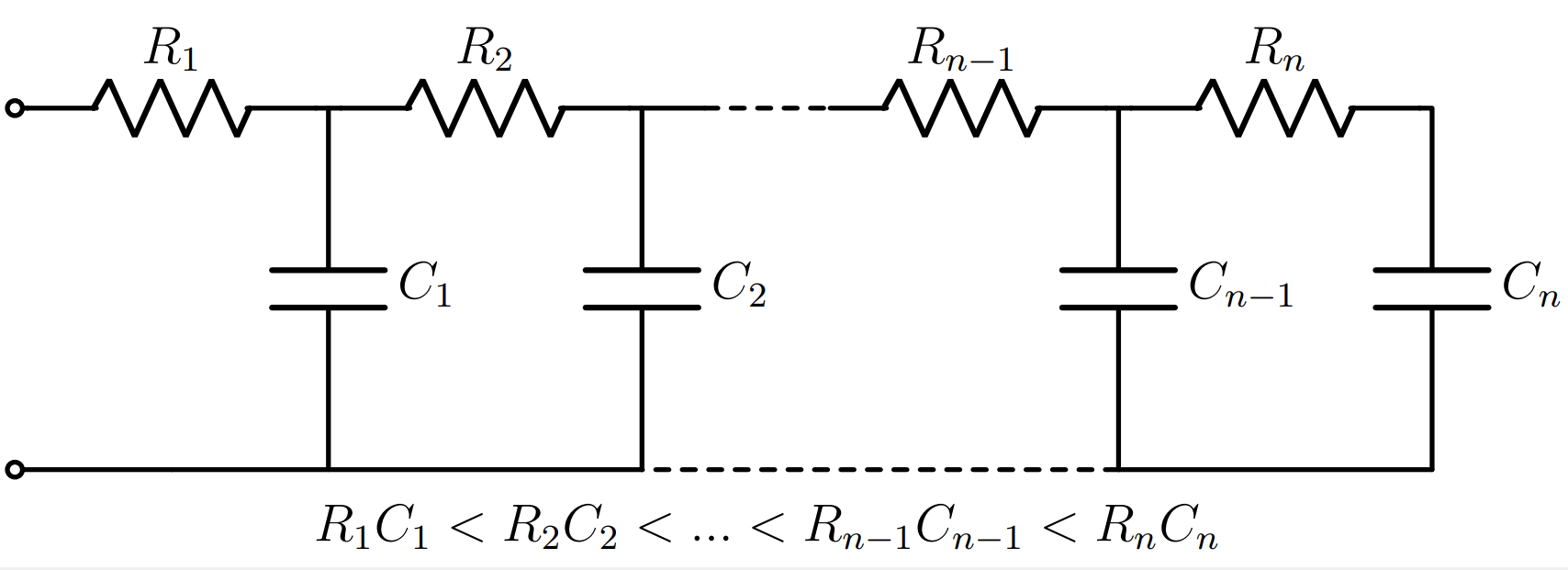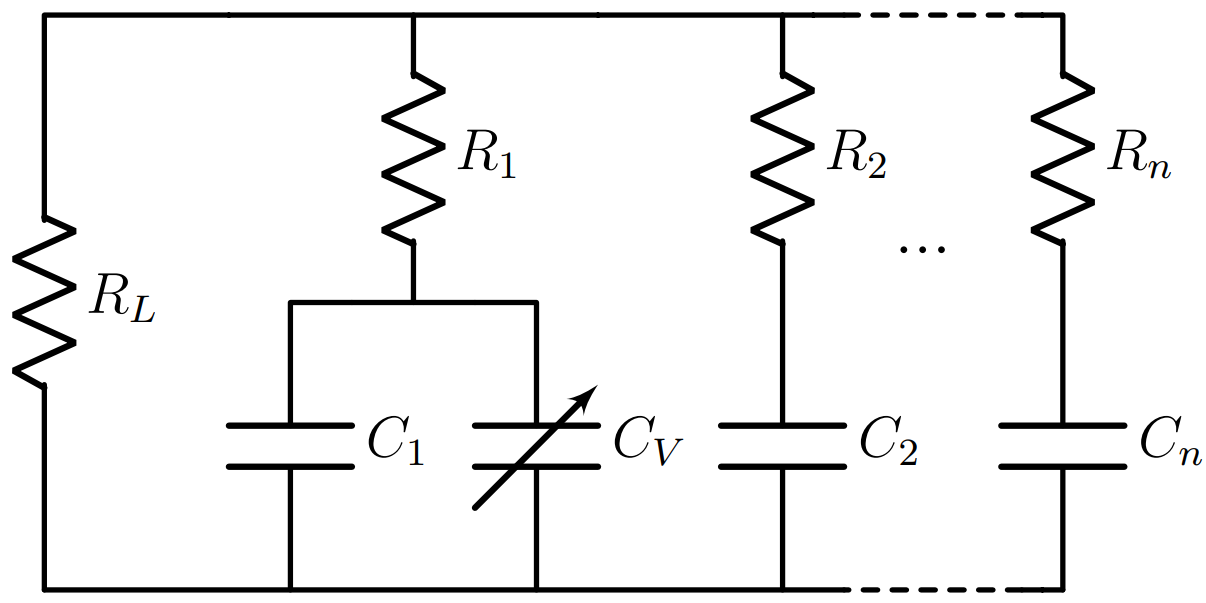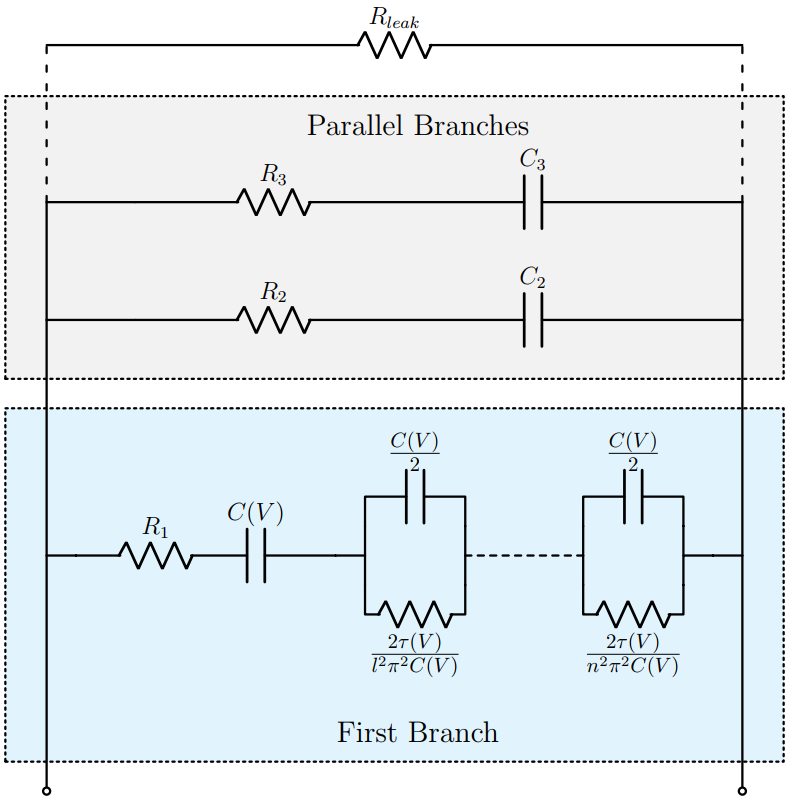%Modeling of Supercapacitors (UltraCapacitors)
% Author: Amir Ostadrahimi
% for more information see: https://doi.org/10.1109/ACCESS.2023.3250965 --> ( New Parameter Identification Method for Supercapacitor Model )
\documentclass[border=3pt, tikz]{standalone}
\usepackage[american,cuteinductors,smartlabels]{circuitikz}
\ctikzset{bipoles/thickness=1.2}
\ctikzset{bipoles/length=1.5cm}
\tikzstyle{every node}=[font=\large]
\tikzstyle{every path}=[line width=1 .1pt,line cap=round,line join=round]
\begin{document}
\begin{tikzpicture}
%Simple models of SCs
%First Model (left)
\coordinate (SC0) at (0,0) ;
\draw (SC0) to [short,o-]++(0.4,0) to [R, l=$ESR$]++(1.9,0) to [C, l_=$C$]++(1.9,0) to [short,-o] ++(0.4,0);
%Second Model (right)
\coordinate (SC1) at (6,0) ;
\draw (SC1) to [short,o-]++(0.4,0) to [R, l=$ESR$]++(1.9,0) coordinate (E2)
to [short] ++(0,1) to [R, l=$EPR$] ++(1.8,0) to [short] ++(0,-1) coordinate (C2) to [vC, invert,mirror, l=$C$](E2);% using "mirror" and "invert" one can change the direction of the arrow.
\draw (C2) to [short, -o]++(0.8,0);
\end{tikzpicture}
%
\begin{tikzpicture}
%Transmission line Model
\newcommand\gap{0.2} %short gap between elements
\newcommand\Rlength{2.1} %length of resistors
\newcommand\Clength{2.9} %length of Capacitors
\coordinate (SC0) at (0,0) ;
\draw (SC0) to [short,o-]++(\gap,0) to [R, l=$R_{1}$]++(\Rlength,0) to [short]++(\gap,0) coordinate (C1T); %% C1T is the point from which capacitor1 will be
\draw (C1T) to [short]++(\gap,0) to [R, l=$R_{2}$]++(\Rlength,0) to[short]++(\gap,0) coordinate (C2T); %% C2T is the point from which capacitor1 will be
\draw (C2T) --++(0.5,0) coordinate (dashedT1); %% dashed line in the top part of the circuit
\draw [dashed] (dashedT1) --++ (1,0) coordinate (dashedT2); %% where dashed finishes in the top
\draw (dashedT2) to [R, l=$R_{n-1}$]++(\Rlength,0) to [short]++(\gap,0) coordinate (CN1T) to[short]++(\gap,0) to [R, l=$R_{n}$]++(\Rlength,0) to [short]++(\gap,0) to [C, l=$C_{n}$]++(0,-\Clength) coordinate (CnB); %% CnB is the bottom of Cn
%CAPACITORS
\draw (C1T) to [C, l=$C_{1}$]++(0,-\Clength) coordinate (C1B); %% C1B is the bottom of C1
\draw (C2T) to [C, l=$C_{2}$]++(0,-\Clength) coordinate (C2B); %% C2B is the bottom of C2
\draw (CN1T) to [C, l=$C_{n-1}$]++(0,-\Clength) coordinate (CN1B); %% CN1B is the bottom of CN1
\draw (SC0) to [open,] ++(0,-\Clength) coordinate (SC0B) ; %% SC0B is the bottoom part of the input
% Lines





